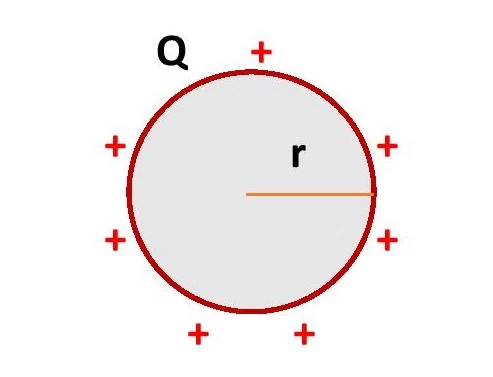All substances are neutral by nature. They can be charged artificially or by some natural phenomena like lightning. In previous article, we learned about electric charges and their production. We became to know that the electric charges do not have the same distribution in differently shaped bodies. Because all substances don’t have the same length, surface and volume. In this article, I’m going to explore different types of electrostatic charge distributions and the equations related to those.
Contents of this article:
- Definition of electrostatic charge distributions
- Different types of charge distribution
- Uniform and non-uniform charge distribution
- Linear distribution of charge
- Surface charge distribution
- Volume charge distribution
- Electric fields and charge distributions
What is the Charge Distribution in Electrostatics?
The distribution of electric charges in a charged conductor is known as the electrostatic charge distribution. It gives an idea of the nature of the electric field around the conductor.
Types of Charge Distribution
On the basis of symmetry, there are two types of charge distributions –
- Uniform Charge Distribution
- Non-uniform Charge Distribution
Again, there are three types of uniform charge distributions along the three dimensions of a conductor. These are –
- Linear Charge Distribution
- Surface Charge Distribution
- Volume Charge Distribution
Uniform and Non-uniform Charge Distributions
Uniform means equal distribution. If the amount of electric charge given to a conductor is distributed equally per unit dimension (unit length, unit surface area or unit volume), then the distribution of charge is a uniform distribution. Sometimes, it is called continuous charge distribution. Uniform spherical charge distribution is an example of this. Any symmetric body like a sphere, cylinder, etc. can have a uniform charge distribution.
If the charge of a conductor has different densities at different lengths, areas or volumes, then it’s a non-uniform distribution of charge. Conductors having uneven curvatures can have non-uniform charge distributions.
Linear Charge Distribution of a conductor

When the distribution of electric charges takes place along the length of a conductor, then the distribution is called the Linear distribution. One can see this type of charge distribution in a linear conducting body like a wire, a cylinder, etc. The Linear charge density gives the measurement of the linear charge distribution of a conductor.
Surface Distribution of Charge

In two-dimensional and three-dimensional conductors, the electric charge distribution takes place over the surface of the conductors. Such a type of distribution of electric charge is the Surface charge distribution. A solid sphere, spherical shell, cylinder, rectangular sheet, capacitor’s plates, etc. can have surface charge distribution of their surfaces. The Surface charge density gives the measurement of charge distribution over the surface of a conductor.
Volume Charge Distribution
Volume Charge Distribution is the distribution of electric charge in the volume of a conductor. A three-dimensional conductor can have the volume distribution of charge. It is expressed by the term Volume Charge density. There is a detailed article on the Volume change density of a Sphere and Cylinder on our website.
Electric fields and charge distributions
There is a direct relation between the electric field and electrostatic charge distribution. One can find the electric field due to a continuous charge distribution by using Gauss’s law of electrostatics. However, it’s difficult to use Gauss’s law in case of a non-uniform distribution of charge.
This is all from this article on different types of electrostatic charge distributions. If you still have any doubts about this topic, you can ask me in the comment section. A charge distribution produces an electric field near it. In the next article, I’ve discussed about Electric Field and its Intensity.
Thank you!
Related posts:
